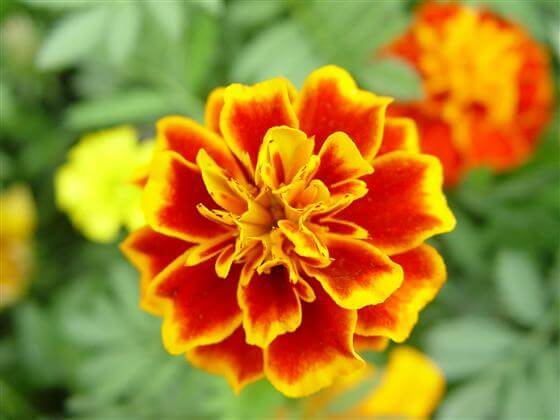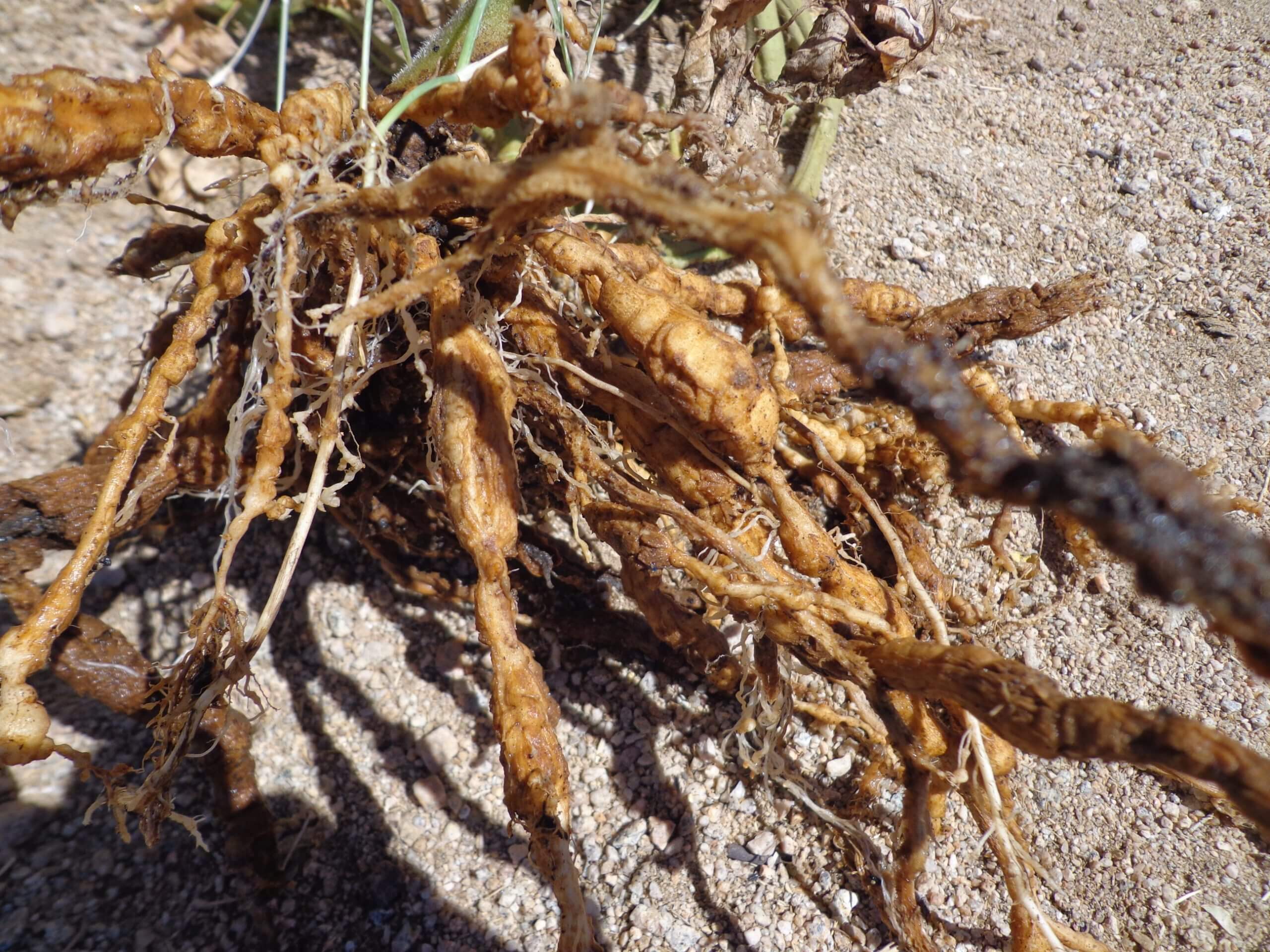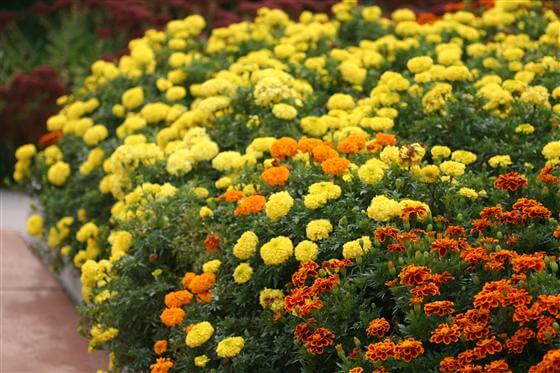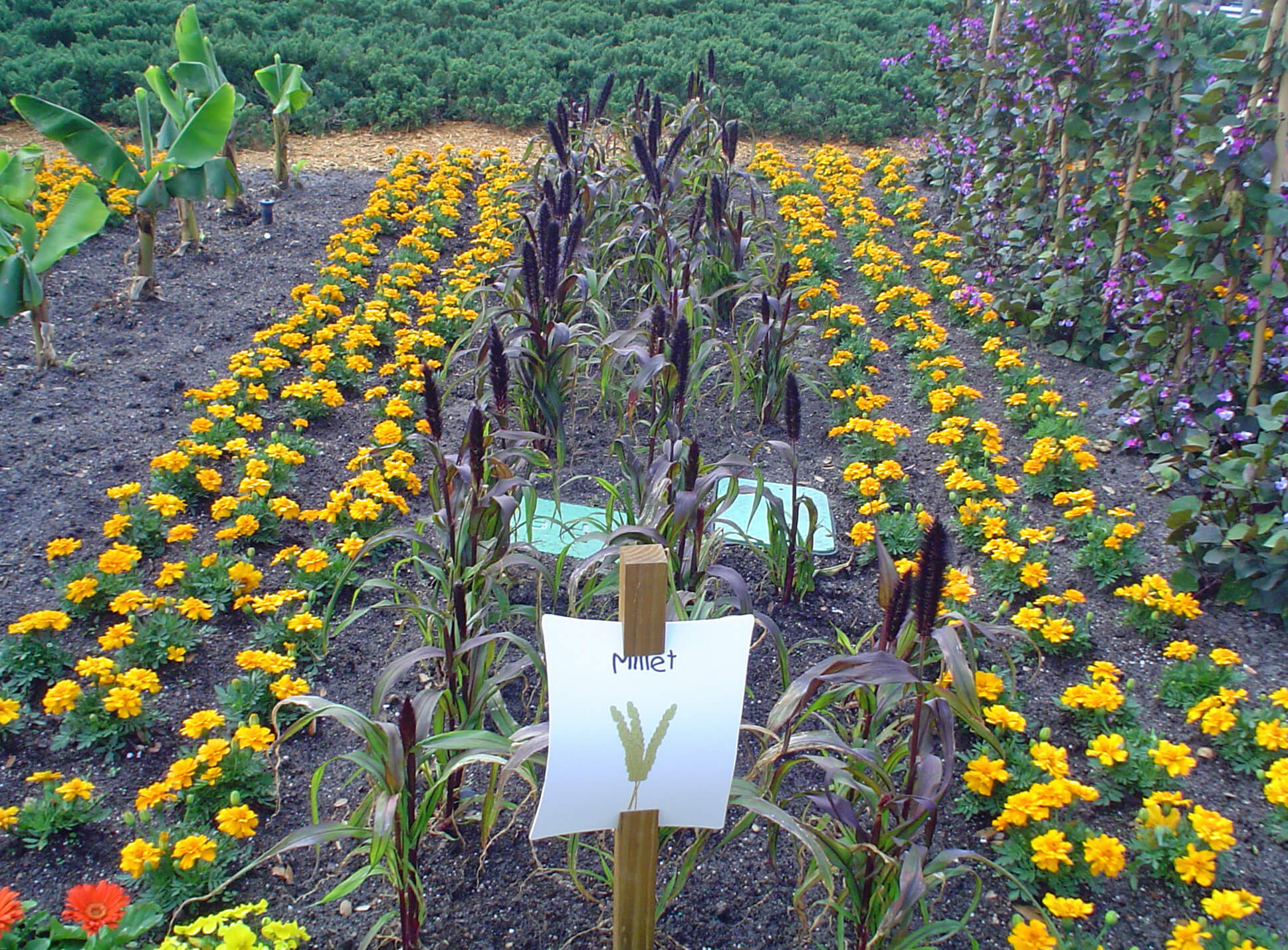
A single flower crops up time and again in vegetable gardens, old and new. Our grandparents may not have known why they were included, but they carried on this tradition “to keep bugs out”. But marigolds don’t control pests that bedevil foliage, so why did this practice become so ingrained in the home garden? Agricultural studies have finally revealed the reasons for marigold planting in organic vegetable gardens and how they actually contribute to plant health.
Nematode Killing Power!

Those who’ve seen their tomatoes destroyed by root knot nematodes (Meloidogyne spp.) know this is among the few nearly incurable pest problems. Once these microscopic soil-borne worms reach sufficient populations, little will survive long in that ground. Nematodes invade the root tips of plants where they take up residence, laying eggs that contain up to 500 offspring, each to quickly infest the root system. Nematodes are easily spread and may be introduced to gardens via nursery plants, topsoil, tillers, and manure.
Above-ground symptoms of nematode damage in tomatoes include stunting, leaf wilt, and leaf yellowing. Infested tomatoes are generally found in circular patches in the field or garden. Other pests and diseases can cause these symptoms, so the only way to accurately identify root knot nematode damage is to dig down and look for gall development on the roots. If the galls are there, your tomatoes are infected! This is where marigold magic comes in.
Most marigolds can do some good, but the marigold species that works best is Tagetes patula, the common dwarf French marigold you find in practically every annual bedding plant display. (Note that varieties ‘Diamond Jubilee’, ‘Petite Harmony’

and ‘Bolero’ lack sufficient chemical content so avoid growing them alongside your tomatoes, if you want effective pest deterrence.) Some alpha-terthienyl-filled varieties include ‘Nema-Gone‘, a Burpee-exclusive variety proven to be effective in killing soil-borne nematodes, and the old-fashioned ‘Harlequin‘, which is an heirloom from 1871.
Alpha-terthienyl is present in a marigold’s living roots and branches, so you can’t chop up the plant and extract the chemical for use in a soil drench. Living plants are the only way to solve nematode problems. When planted in infested soil, the worms will invade the roots of the marigold, but not for long. Once inside, the adults will not thrive and eggs will not hatch. The marigold roots act as “traps” to lure existing nematodes to enter and die, thus destroying a good number of them every year.
So how should you plant marigolds to maximize their nematode-killing power? Regular cultivation of marigolds with vegetables in nematode-prone regions, such as the South, is an ongoing means of reducing and preventing growth of root knot nematode populations. But, the only way to truly rectify infested ground is to set aside that zone for a summer marigold cover crop. This, in addition to regular crop rotation, will reduce nematode populations significantly.

Plant the garden in tightly spaced masses of these heat-loving flowers, so the pests have no safe ground to reproduce. Be sure to keep your marigold cover crop well weeded, because many weeds are also food for pesky root knot nematodes, supplement with Black Gold Rose & Flower Fertilizer, and give plants good care. Pick off spent flowers to prevent seed formation and water plants regularly. While you may not be able to grow other crops during this “clean-out” year, the following year should be highly productive.
For best results, plant vegetable varieties listed with a “N”, an abbreviation that designates nematode resistance. Nematode-resistant tomatoes include popular varieties like ‘Celebrity‘, ‘Better Boy‘, ‘Beefmaster‘, and ‘Sun Cherry‘. Flank their rows with dwarf marigolds to further reduce nematode populations. Then join all the old-time gardeners by planting marigolds every year after, alternating their positions with crop rotation to prevent populations from ever rising again.

